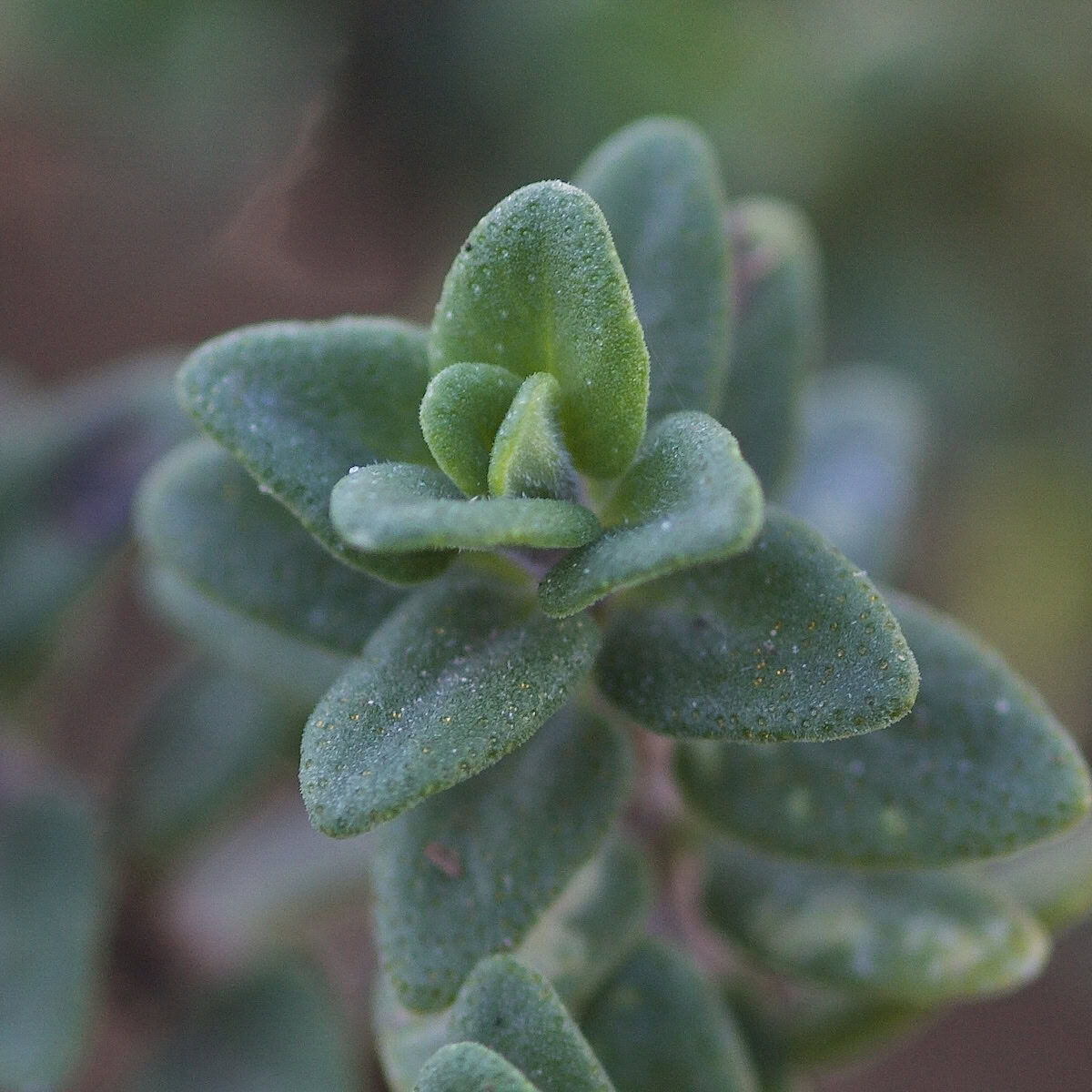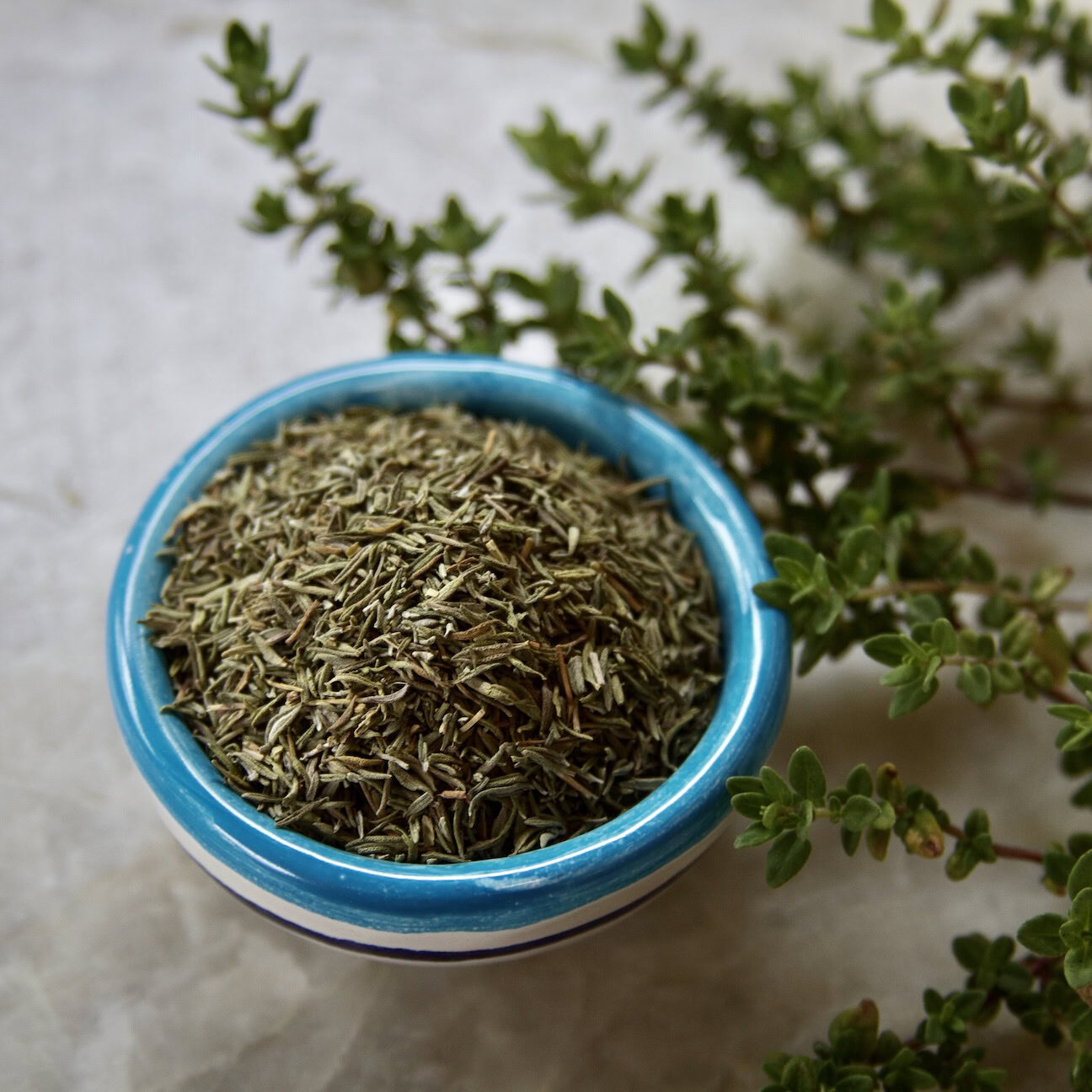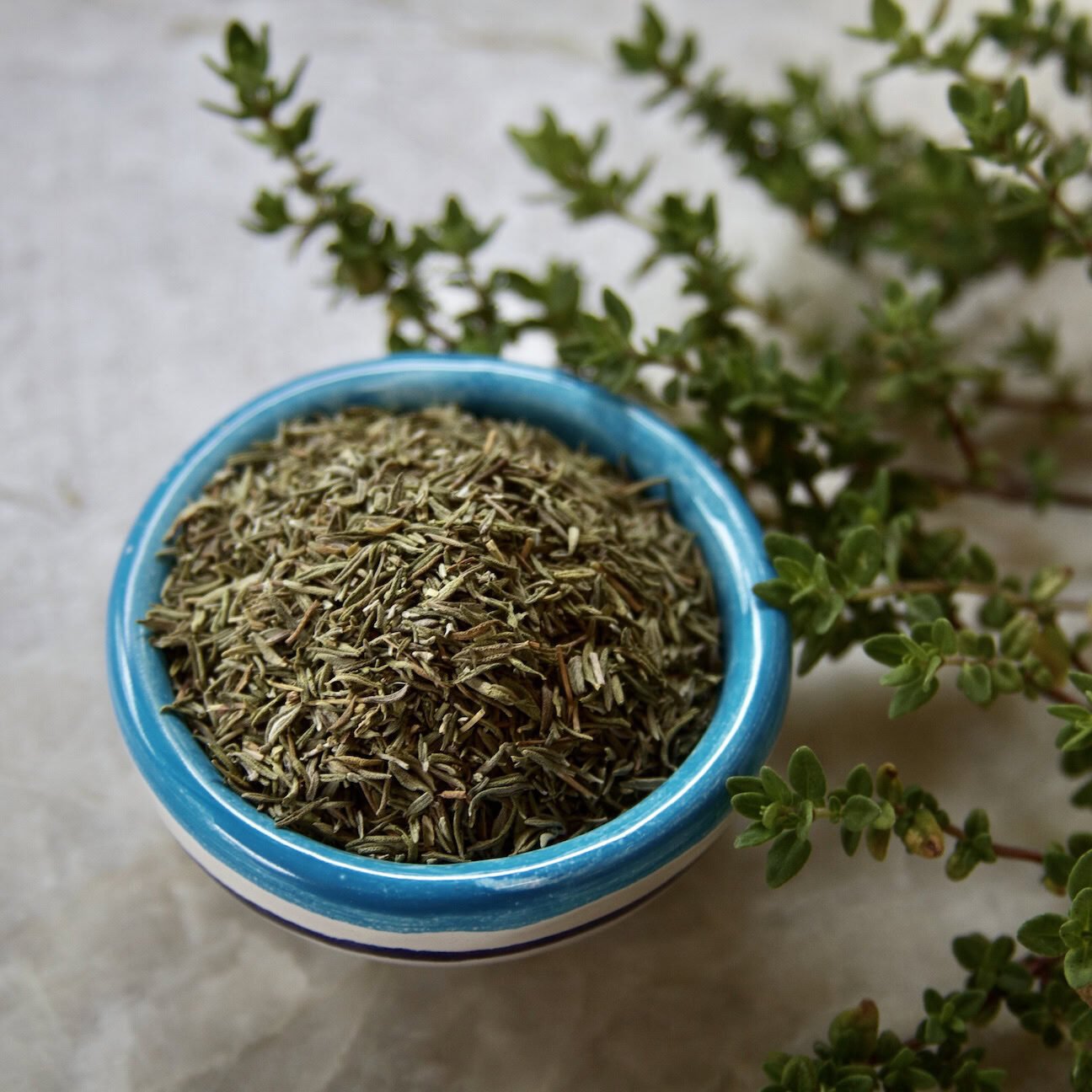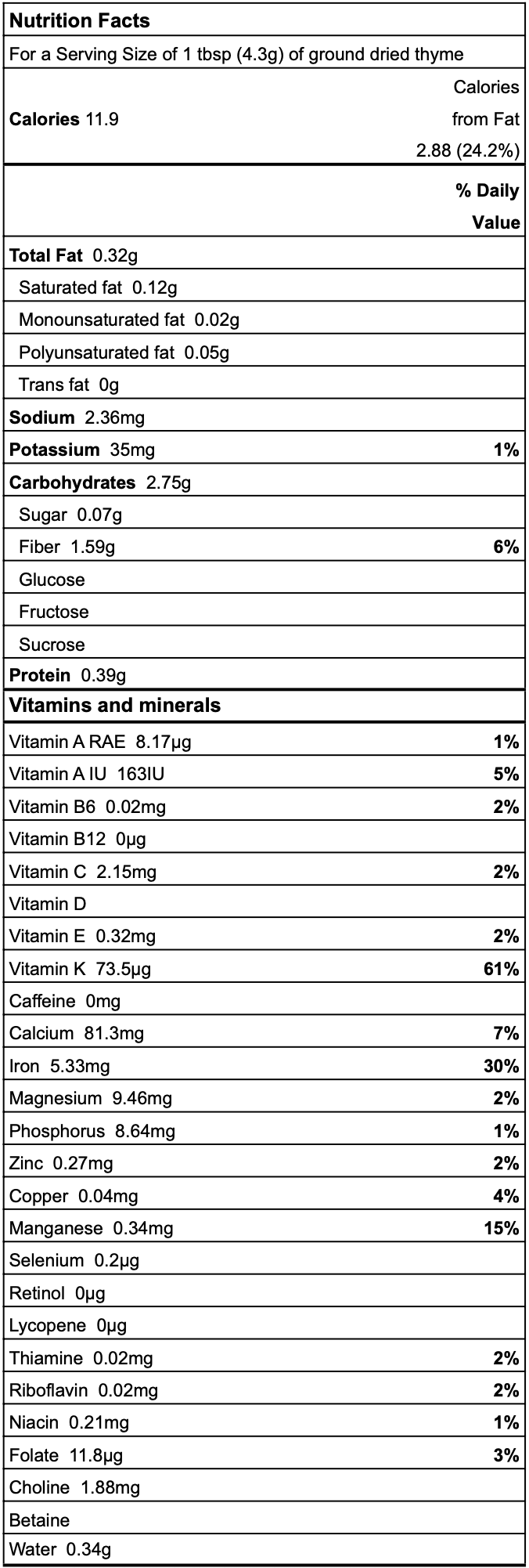Thyme
Thyme is the herb derived from the leaves, stems, and flowers of various species and cultivars in the genus Thymus, part of the mint family. There are approximately 215 species, but only a few are widely used in cooking. Each of the following species has numerous cultivars, totaling ~50 culinary varieties of thyme. Common thyme is the most popular with the most cultivars (including English & French thyme).
Common Thyme: Thymus vulgaris (above)
Lemon Thyme: Thymus citriodorus (below)
Wild / Creeping Thyme: Thymus serpyllum
Spanish Thyme: Thymus zygis
Caraway Thyme: Thymus herba-barona
Orange Thyme: Thymus fragrantissimus

REGION OF ORIGIN
The Mediterranean. For millennia, thyme has been woven into the culinary, medicinal, and spiritual traditions of Southern Europe, North Africa, and the Middle East.
PART & COLOR
Thyme’s small, oval-shaped leaves grow in clusters along its thick stems. They have a slightly fuzzy texture and are bright green when fresh, but some varieties show hints of yellow or purple or have interesting variegated patterns. The leaves are often dried for cooking, turning a darker olive green to light brown. Thyme flowers, usually pale purple, bloom in tight clusters at the tips of the stems. They are edible and delicious!
HARVEST
Thyme is a hardy perennial that continues to grow year after year. The optimal harvest time aligns with its peak growing season—from late spring through early summer. Clip the top 5-6 inches off, leaving the lower stems enough structure to regrow. Thyme can be harvested multiple times per year, but for the final harvest, cut all the stems back to about 1/3 of their height. Use what you can fresh, then dry the rest so you have enough to last until next year's harvest season.

FLAVOR & AROMA PROFILE
The complex aroma of thyme is a concert of pine needles, mint leaves, and lemon zest with an underlying herbal depth and earthy warmth. It’s a wordy description, but words aren’t the best way to know it. It’s unmistakable once it registers in your olfactory memory. Thyme’s evocative fragrance has been associated with courage and strength since antiquity. “To smell of thyme” was a high compliment to the Greeks. It meant the person is brave. Soldiers would even rub thyme sprigs on their chests to give them an edge before battle.
Not surprisingly, thyme tastes like it smells. All of the notes mentioned above come through on the palate, accompanied by a warming sensation. Some cultivars have a more pronounced citrus or floral character, but all of them deliver a bold, multilayered experience.
CULINARY USES
Throughout the Mediterranean, thyme is often paired with meats and seafood. Its robust flavor plays well with the richness of beef, pork, and lamb, and its lemon notes bring out the sweetness of fish and shellfish. In the United States, it's used every year in Thanksgiving stuffing. The herb's unique aromatics add a complex warmth to the feast and nostalgia to the holiday.
Thyme merges well with winter vegetables like carrots, potatoes, and squash, so it's a classic ingredient in hearty soups, stews, and tomato-based sauces. Try bundling it with bay leaves and parsley in a bouquet garni. You can add whole sprigs early on, giving their essential oils time to fully infuse into the dish, or you can strip the leaves off the stems and finely chop them for a more intense flavor.



